Explore Harare - Zimbabwe Travel, Africa
Harare, the bustling capital of Zimbabwe, is a city full of life, blending modernity with rich cultural heritage. Known as the "Sunshine City," Harare charms visitors with its pleasant climate, tree-lined streets, and friendly locals. From its colorful markets to vibrant arts scene, Harare is a gateway to exploring Zimbabwe's diverse culture and attractions. Whether you're seeking adventure or relaxation, Harare provides an ideal base for discovering the best of Zimbabwe.
Population: Approximately 1.5 million in 2022.
Economy: Harare's economy is diverse, with key sectors including agriculture, manufacturing, and services. The city serves as Zimbabwe’s economic hub, driving growth through trade, finance, and industry.
Landmarks: Famous for the National Gallery of Zimbabwe, Harare Gardens, and Chapungu Sculpture Park.
Zimbabwe
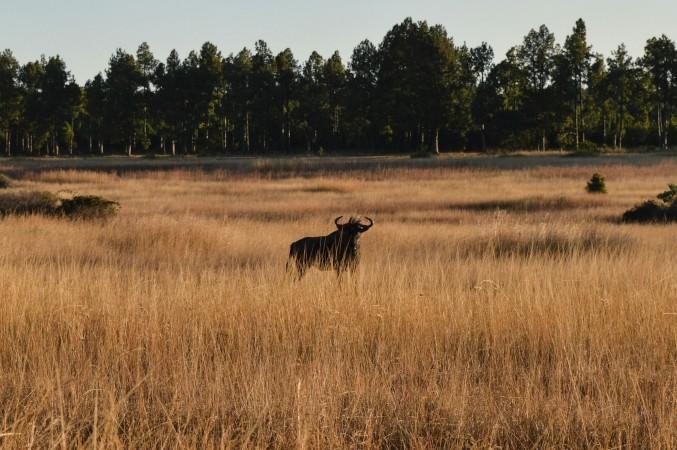
Overview of Harare
History & Culture Influence
Harare’s history is steeped in a mix of indigenous traditions and colonial influences. Founded as Salisbury in 1890 during British colonization, the city has transformed into a thriving metropolis post-independence, officially becoming Harare in 1982. Harare is also a cultural hub, deeply rooted in the Shona traditions, one of Zimbabwe’s major ethnic groups. The city’s cultural heritage showcases the evolution of Zimbabwean art, together with the local music scene, which thrives with the sounds of mbira (thumb piano) and marimba, reflecting the deep cultural resonance of Zimbabwean life.
Interaction with The Locals
Harare, the capital city of Zimbabwe, has a population of approximately 1.5 million people, making it the country's largest city. The population is diverse, with the majority being of Shona ethnicity, alongside smaller groups such as the Ndebele and other minorities. Harare’s citizens are known for their warmth and hospitality, often welcoming visitors with a friendly demeanor. The city has a youthful population, with many people engaged in commerce, education, and the arts.
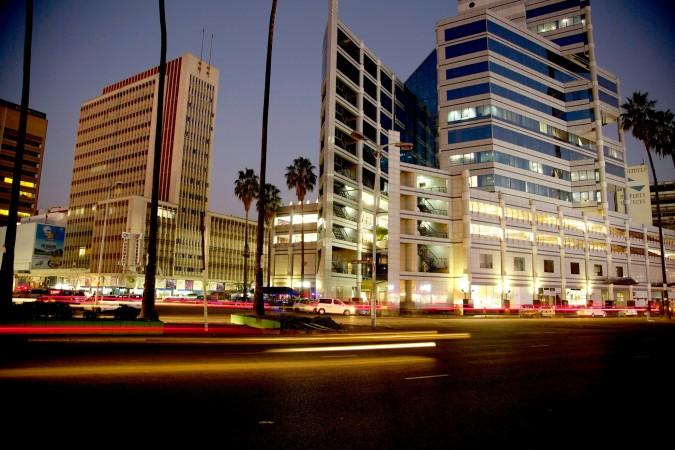
Harare under the city lights - © Tatenda Mapigoti
Top Attractions in Harare
National Gallery of Zimbabwe
The National Gallery of Zimbabwe is a cultural treasure that showcases a stunning collection of contemporary African art. The gallery features works from both local and international artists, highlighting Zimbabwe’s contribution to the global art scene. Visitors can explore exhibitions that include sculptures, paintings, and photography, providing a deep insight into the country's artistic evolution.
Mbare Market
For a genuine experience of local life, visit Mbare Market, Harare's oldest and most bustling market. Fresh fruit and traditional crafts are available here, as well as local fabrics and souvenirs. The market is a sensory experience, bustling with vendors and shoppers, and offers a chance to engage with locals while discovering unique Zimbabwean goods.
Harare Gardens
Harare Gardens is the city's largest public park and offers a peaceful escape from the urban hustle. Located in the city center, this green oasis is ideal for a relaxing walk or a picnic amidst well-maintained lawns, trees, and flower beds. It’s a favorite spot for locals and visitors alike, providing a tranquil setting to unwind or enjoy outdoor events.
The Kopje
For breathtaking views of Harare, a hike up The Kopje is a must-do activity. This granite peak provides panoramic views of the city skyline and nearby surroundings. It’s a popular spot for photographers and those seeking a bit of nature without leaving the city. The climb is short but rewarding, making it a great way to start or end your day in Harare.
Chapungu Sculpture Park
Art lovers should not miss Chapungu Sculpture Park, where Zimbabwe’s renowned stone sculptures are on display in a beautiful outdoor setting. The park celebrates the traditional Shona art form of stone carving, featuring works that capture the cultural and spiritual essence of Zimbabwe. It’s a perfect spot for those looking to appreciate local craftsmanship and creativity.
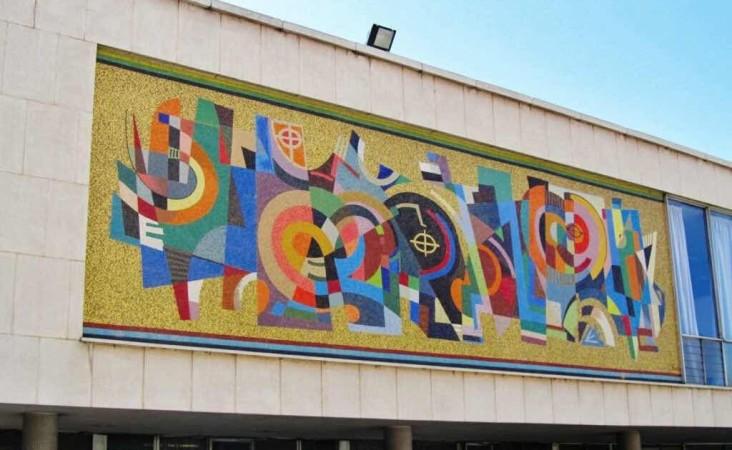
National Gallery of Zimbabwe - © GREEDYSOUTH
Must-Try Dishes in Harare
Harare must-try local dishes offer a rich culinary experience, with each meal showcases the best of Zimbabwean flavors.
- Sadza: A staple food across Zimbabwe, Sadza is a thick, maize-based porridge served with various sides such as meat, leafy vegetables, or stew. It's the heart of many Zimbabwean meals, offering a comforting and filling experience.
- Nyama Choma: Nyama Choma, meaning "grilled meat," is a popular dish found throughout Harare’s eateries and street food stalls. Beef, goat, or chicken is seasoned and grilled to perfection, often enjoyed with Sadza or salads.
- Mopane Worms: An adventurous choice, Mopane worms are considered a delicacy in Zimbabwe. These protein-rich caterpillars are typically dried, fried, or cooked in tomato and onion sauce. They are a local staple, eaten as a snack or side dish, due to their crispy texture and distinct flavor.
- Maheu: Maheu is a traditional fermented maize drink, served as a refreshing beverage or snack. Slightly sour and creamy, it’s both filling and nutritious. Visitors will find this drink readily available at local markets or as a street-side treat.
- Mutakura: Mutakura, a dish made with cooked grains, peanuts, and beans, is a light and nutritious alternative. This nutritious dish is often enjoyed as a snack or side, providing a taste of Zimbabwe's agricultural bounty. It’s a common dish during family gatherings or festivals.
- Peanut Butter Rice: A uniquely Zimbabwean twist on rice dishes, Peanut Butter Rice is cooked rice mixed with creamy peanut butter, creating a rich and savory flavor. It's often served as a side dish with meats or vegetables and is loved for its simple yet satisfying taste.
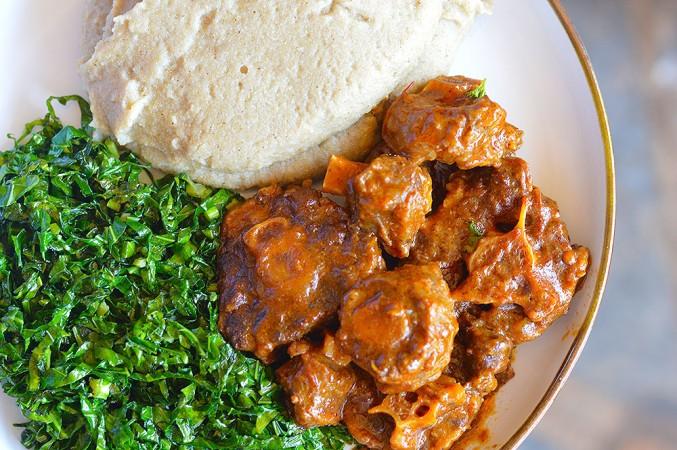
Sadza - © ZimboKitchen
Festivals & Local Celebrations
Harare is a vibrant city with a dynamic cultural calendar, filled with events that highlight its rich heritage, music, and community spirit. These festivals offer visitors an opportunity to experience Zimbabwean culture up close and celebrate with the locals.
Harare International Carnival
The Harare International Carnival is one of the city's biggest annual events. Held in September, this lively street festival brings together music, dance, and costumes from across Zimbabwe and beyond. The event sees colorful parades, live performances, and cultural showcases that reflect the nation’s diversity. It's a must-attend for anyone looking to experience Zimbabwean joy and creativity.
Harare Agricultural Show
A major event in Zimbabwe’s calendar, the Harare Agricultural Show takes place every August. It’s a showcase of Zimbabwe’s farming and agricultural industry, offering exhibitions, livestock displays, and a range of entertainment for families. Visitors can learn about Zimbabwe’s agricultural traditions while enjoying local foods, crafts, and live performances.
Jikinya Dance Festival
The Jikinya Dance Festival celebrates traditional dance, particularly among schoolchildren, as they perform dances from different Zimbabwe ethnic groups. Held annually, it showcases the country’s cultural diversity, highlighting various styles like the Mbende Jerusarema. It’s a family-friendly festival and a great opportunity to see young performers keep Zimbabwean traditions alive.
Shoko Festival
A growing favorite among the youth, the Shoko Festival is Zimbabwe’s biggest urban culture festival, held annually in Harare. It focuses on music, comedy, and spoken word, bringing together Zimbabwean and international artists. Shoko is known for its vibrant atmosphere and fusion of art forms, with performances that appeal to both locals and tourists looking for an alternative festival experience.
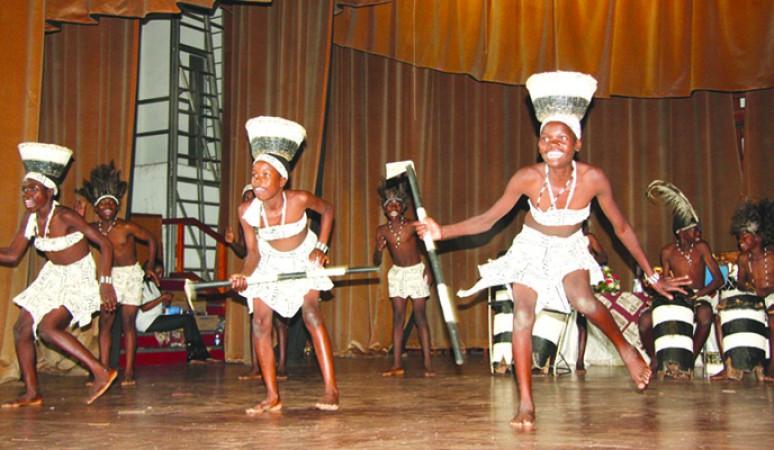
Jikinya Dance Festival - © NewsDay Zimbabwe
What to Do in Harare
- Wildlife Safaris in Harare: Although Harare is an urban center, several game reserves are within easy reach. You can embark on a day trip to Lion & Cheetah Park or Lake Chivero Recreational Park to see wildlife such as lions, zebras, and antelopes.
- Birdwatching at Lake Chivero: Lake Chivero is a birdwatcher's paradise, with over 400 species documented in the vicinity. Birdwatching tours around the lake are a peaceful way to connect with nature while observing species like the African fish eagle and the sacred ibis.
- Explore Shona Sculpture Gardens: The Shona Sculpture Gardens feature a collection of stunning stone sculptures created by Zimbabwean artists. The outdoor gallery provides a serene setting to appreciate the intricate craftsmanship of Shona art.
- Relax at Lake Chivero Recreational Park: Lake Chivero Recreational Park offers a range of outdoor activities, including picnicking, boating, and fishing. This scenic lake is surrounded by a wildlife reserve where visitors can see animals like giraffes, rhinos, and various bird species.
Shopping in Harare
- Avondale Flea Market: The Avondale Flea Market is a favorite among locals and tourists alike. Known for its vibrant atmosphere, this market offers an eclectic mix of items, including handcrafted jewelry, artwork, and vintage clothing.
- Sam Levy’s Village: For a more upscale shopping experience, Sam Levy’s Village in Borrowdale is the place to go. This open-air mall features boutiques, restaurants, and luxury stores. It’s a great spot for travelers seeking both local and international brands.
- Mbare Market: As Harare’s largest market, Mbare is ideal for those looking to immerse themselves in the local culture. This bustling market offers everything from traditional foods to crafts.
- Eastgate Mall: Eastgate Mall is a modern shopping complex located in Harare’s central business district. It offers a variety of retail stores, cafes, and restaurants, making it a convenient place for tourists to shop and relax after a day of sightseeing.
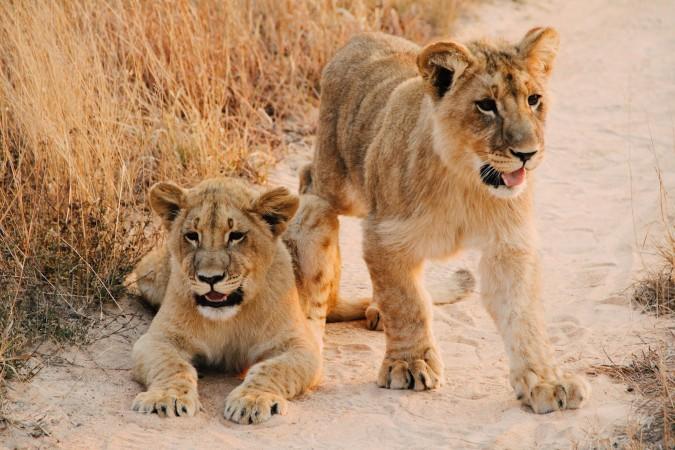
Wildlife Safaris in Lion & Cheetah Park - © Christine Donaldson
Weather in Harare: Best Time to Visit
Spring in Harare
- Weather: Spring ushers in a warming trend with temperatures between 15°C and 30°C (59°F to 86°F) and minimal rainfall. The city begins to bloom, showcasing beautiful flowers and revitalized greenery.
- Tourism Trend: Spring is ideal for outdoor festivals and nature walks, as visitors take advantage of the pleasant weather to experience Harare’s vibrant cultural scene and natural beauty.
Summer in Harare
- Weather: Summer in Harare brings warm temperatures, ranging from 20°C to 30°C (68°F to 86°F), along with the rainy season.
- Tourism Trend: The frequent afternoon thunderstorms rejuvenate the city’s lush landscapes, making it an excellent time for nature enthusiasts to explore the vibrant greenery. Tourism trends during this period include increased interest in botanical gardens and wildlife parks, as the rain revitalizes the natural surroundings.
Autumn in Harare
- Weather: Autumn sees cooler temperatures between 15°C and 25°C (59°F to 77°F) and reduced rainfall.
- Tourism Trend: The dry and pleasant weather is ideal for sightseeing and outdoor activities. This is a popular time for visitors to enjoy Harare’s parks, markets, and cultural festivals, as the comfortable temperatures make exploring the city’s attractions more enjoyable.
Winter in Harare
- Weather: Winter offers colder temperatures, with daily highs of 10°C to 20°C (50°F to 68°F) and nightly lows of 5°C (41°F). Despite the dry weather, mornings and nights might make you feel chilly.
- Tourism Trend: Winter is a favorable time for city tours and indoor cultural experiences, as the cooler temperatures provide a respite from the heat and allow for comfortable exploration of museums, galleries, and theaters.
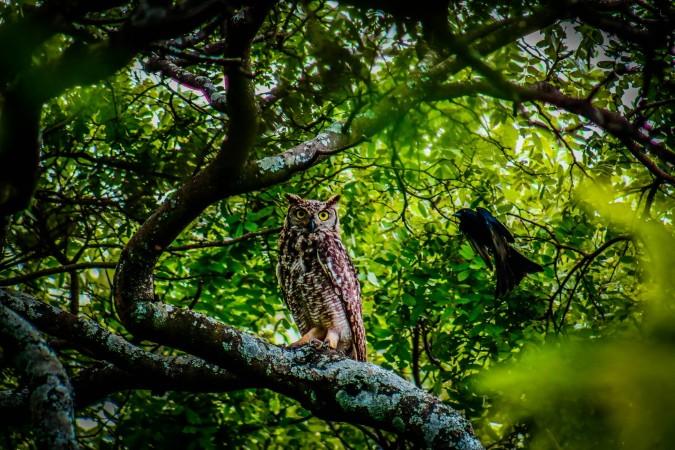
Birdwatching in Harare - © Benjamin Van Der Merwe
Essential Travel Information
Getting Around Harare
- Public Buses: Harare has a network of public buses operated by the Harare City Council, which provide an affordable way to travel around the city. Routes cover major areas and are a common choice for both locals and tourists.
- Combi Taxis: Combi taxis are shared minivans that offer a more flexible and informal transportation option. They are a popular choice for short trips within the city and are known for their convenience and cost-effectiveness.
- Taxis and Ride-Sharing: Taxis are readily available throughout Harare. For a more modern option, ride-sharing services like Uber and Bolt operate in the city, providing a reliable and easy way to get around. They offer a convenient way to travel directly to your destination.
- Private Cars: For those who prefer driving themselves, car rentals are available at various locations in Harare. Renting a car provides flexibility to explore the city and surrounding areas at your own pace.
- Bicycles and Walking: Harare’s central areas are relatively pedestrian-friendly. Walking or renting a bicycle can be a pleasant way to explore local attractions, parks, and markets, especially in the more compact parts of the city.
ATM & Banking Services
Harare makes it easy to manage your finances, with a variety of ATM and banking services available around the city. ATMs are conveniently located in central areas and major shopping centers, generally accepting international cards. Banks offer various services, including currency exchange, cash withdrawals, and financial advice. While the local currency is the Zimbabwean Dollar (ZWL), US dollars are also widely accepted. Currency exchange services are available at banks, hotels, and dedicated exchange bureaus, so comparing rates and fees beforehand can help you get the best deal.
Where to Stay in Harare
- Luxury Hotels: For a luxurious stay, consider top-end hotels offering exceptional amenities such as fine dining, spa services, and stunning city views. These establishments are perfect for travelers seeking comfort and high-end services.
- Mid-Range Hotels: Mid-range accommodations provide a balance of comfort and affordability. Look for hotels that feature amenities like swimming pools, restaurants, and business facilities, catering to both leisure and business travelers.
- Budget Lodgings: For budget-friendly options, seek out hostels and budget hotels that offer affordable and comfortable stays. These lodgings typically provide essential amenities and a welcoming atmosphere, ideal for travelers watching their expenses.
Des articles pour vous

Voyage à Kampong Cham - Cambodge, Asie
Kampong Cham est une charmante ville riveraine située le long du fleuve Mékong. Connue pour son importance historique et ses attractions culturelles, Kampong Cham offre un mélange d'architecture coloniale, de temples anciens et de paysages pittoresques. Kampong Cham est reliée au district voisin de Tbong Khmum par le pont Kizuna, le premier pont au Cambodge à traverser le fleuve Mékong, en faisant un carrefour de transport crucial pour la région.
Population : Estimation de 80 000 habitants (en 2024)
Économie : Bien que n'étant pas encore une destination touristique majeure, Kampong Cham propose des sites culturels et historiques, tels que le temple Wat Nokor et le pont en bambou de Koh Pen, ainsi que des attractions naturelles comme des forêts et des chutes d'eau. Le gouvernement se concentre sur le développement du tourisme pour améliorer l'économie locale.
Points d'intérêt : Wat Nokor Bachey, Phnom Han Chey, Phnom Pros et Phnom Srey, pont en bambou de Koh Pen, Wat Joy T'maw, Preah Theat Teuk Chha, piste d'atterrissage abandonnée de l'US.

Explorez Nha Trang - Voyage au centre du Vietnam, Asie
Nichée le long de la magnifique côte du Vietnam, Nha Trang se distingue comme une destination de premier choix pour les voyageurs. Cette ville côtière, réputée pour ses superbes plages et sa vie marine foisonnante, s'adresse à tous. Nha Trang vous accueille à bras ouverts, que vous recherchiez des aventures, de la culture ou de la détente au bord de la mer. Ce guide vous fera découvrir les points forts de cet endroit magnifique, facilitant ainsi la planification de votre voyage de manière fluide et excitante.
Population : Environ 423 000 habitants en 2019.
Économie : L'un des principaux centres touristiques du Vietnam et la plus grande économie de la province de Khanh Hoa.
Sites emblématiques : Célèbre pour les tours Cham de Po Nagar, la cathédrale de Nha Trang et l'île Hon Mun.

Voyage à Sihanoukville - Cambodge, Asie
Sihanoukville, une ville côtière du sud-ouest du Cambodge, est la capitale de la province de Preah Sihanouk. Située sur une péninsule le long du golfe de Thaïlande, la ville est bien reliée à Phnom Penh par des autoroutes principales et dispose d'un aéroport international.
La ville abrite le seul port en eau profonde du Cambodge, jouant un rôle crucial dans la logistique et le commerce du pays. Les plages magnifiques de Sihanoukville, telles qu'Ochheuteal et Serendipity, attirent aussi bien les touristes nationaux qu'internationaux. Le développement économique a prospéré ces dernières années, en particulier grâce à la création de la Zone économique spéciale de Sihanoukville (SSEZ) et aux investissements chinois dans les casinos, l'immobilier et les stations balnéaires. La ville offre également des attractions naturelles telles que le parc national de Ream et plusieurs îles voisines, en faisant une destination variée pour les voyageurs d'affaires et de loisirs.
Population : La population de Sihanoukville était d'environ 160 000 habitants en 2024.
Économie : Sihanoukville, une ville côtière en pleine croissance au Cambodge, se distingue par son mélange dynamique de développement économique et de tourisme. La Zone économique spéciale de Sihanoukville (SSEZ) est devenue un pôle industriel majeur, abritant plus de 180 entreprises et créant des milliers d'emplois. Avec le seul port en eau profonde du Cambodge, la ville joue un rôle clé dans le commerce et la logistique du pays. Bien qu'elle se soit transformée d'une petite ville balnéaire tranquille en un centre urbain animé, Sihanoukville reste célèbre pour ses plages immaculées, attirant des touristes tout au long de l'année. Les investissements chinois importants ont alimenté la croissance des hôtels, des casinos et de l'immobilier, faisant de la ville un centre d'opportunités économiques et d'hospitalité.
Monuments : Plage d'Otres, Plage d'Ochheuteal, Plage de l'Indépendance, Parc national de Ream, Chute d'eau de Kbal Chhay, Monument des Lions d'Or, Wat Leu.

Explorez Kharkhorin - Voyage en Mongolie, Asie
Bienvenue à Kharkhorin, un trésor historique niché au cœur de la Mongolie. Ancienne capitale vibrante de l'Empire Mongol sous le légendaire Gengis Khan, Kharkhorin se dresse comme un témoignage de la riche culture et de l'histoire de la Mongolie. Cette ville antique possède une combinaison unique d'importance historique et de paysages époustouflants, en faisant une destination incontournable pour un voyage de rêve en Mongolie. En mettant le pied à Kharkhorin, vous ferez un saut dans le temps, à une époque de grands palais, de routes commerciales prospères et d'échanges culturels sans pareils. Que vous soyez intrigué par les ruines anciennes, désireux d'explorer les traditions locales ou simplement en quête d'une immersion dans la beauté naturelle de la Mongolie, Kharkhorin a quelque chose à offrir à chacun.
Population : Environ 1 000 habitants en 2020.
Économie : L'une des attractions touristiques les plus importantes de la Mongolie et l'ancienne capitale de l'Empire Mongol.
Monuments : Célèbre pour les Ruines de Kharkhorin, le Monastère d'Erdene Zuu, et la Vallée d'Orkhon, un site du patrimoine mondial de l'UNESCO.

Explore Luang Prabang - Laos Travel, Asia
Luang Prabang, nestled in northern Laos at the meeting point of the Mekong river and Nam Khan river, is a city celebrated for its rich cultural heritage and stunning natural beauty. Recognized as a UNESCO World Heritage Site in 1995, it boasts a unique blend of traditional Lao and French architecture that has been carefully preserved. Whether you're wandering through its ancient temples, admiring the local architecture, or soaking in the natural beauty of waterfalls and rivers, Luang Prabang offers something for everyone.
Population: Approximately 470,000 in 2020.
Economy: Luang Prabang's economy thrives on tourism, with its UNESCO status drawing visitors to its temples, natural wonders, and cultural experiences. Local crafts, hospitality, and small businesses also play vital roles, supporting the town's sustainable growth. Local crafts, hospitality, and small businesses also play vital roles, supporting the town's sustainable growth.
Landmarks: Famous for the Wat Xieng Thong, Royal Palace Museum (also known as Haw Kham), and Mount Phousi (Phou Si Hill).Luang Prabang, nestled in northern Laos at the meeting point of the Mekong river and Nam Khan river, is a city celebrated for its rich cultural heritage and stunning natural beauty. Recognized as a UNESCO World Heritage Site in 1995, it boasts a unique blend of traditional Lao and French architecture that has been carefully preserved. Whether you're wandering through its ancient temples, admiring the local architecture, or soaking in the natural beauty of waterfalls and rivers, Luang Prabang offers something for everyone.
Population: Approximately 470,000 in 2020.
Economy: Luang Prabang's economy thrives on tourism, with its UNESCO status drawing visitors to its temples, natural wonders, and cultural experiences. Local crafts, hospitality, and small businesses also play vital roles, supporting the town's sustainable growth. Local crafts, hospitality, and small businesses also play vital roles, supporting the town's sustainable growth.
Landmarks: Famous for the Wat Xieng Thong, Royal Palace Museum (also known as Haw Kham), and Mount Phousi (Phou Si Hill).

Explore Vientiane - Laos Travel, Asia
Vientiane, the capital of Laos, offers a unique travel experience for those looking to explore a peaceful Southeast Asian city with a deep connection to its cultural roots. Unlike other bustling capitals, Vientiane boasts a serene and laid-back atmosphere, making it a perfect destination for travelers wanting to escape the chaos of more crowded cities. This charming city sits along the Mekong River, offering scenic views, rich history, and a vibrant yet tranquil way of life. As a gateway to exploring Laos, this capital invites you to slow down, immerse in its heritage, and enjoy the local flavors.
Population: Approximately 840,000 in 2023.
Economy: Vientiane's economy is growing steadily, driven by government services, trade, and tourism. Key sectors include agriculture, manufacturing, and construction. The city's strategic location along the Mekong River supports trade with neighboring Thailand and Vietnam.
Landmarks: Famous for the Pha That Luang, Patuxai, and the Buddha Park (or Wat Xieng Khuan).
